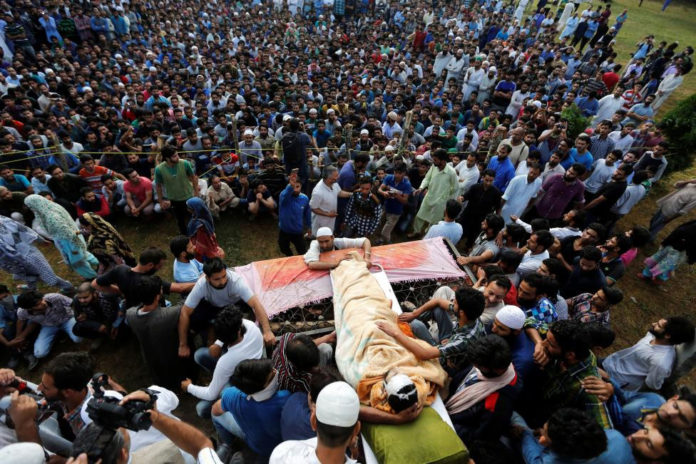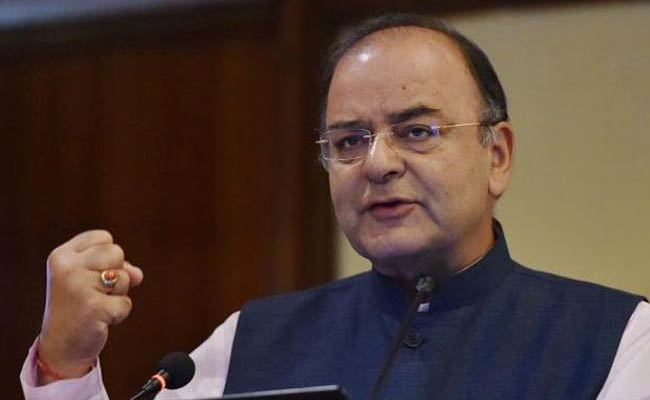Kashmiri militant Burhan Wani, who was killed recently, is being hailed as a hero by many people. However, I regard him as only a pawn, who was being used by some people. But which people? Some say it was the Pakistanis, but in my opinion it was the Chinese. So let me explain my views, said the former judge of Supreme Court and the former chairman, Press Council of India Markandey Katju in a blog post in The Huffington Post.
Separatist Kashmiri militants are obviously getting arms, supplies and other kinds of help from some government. Arms and supplies do not fall from the sky, Katju added. The question is which government? Now, here we have to rely on some conjecture. We obviously will not get direct proof. But we can draw logical inferences and put two and two together. After all, apart from direct evidence there is also circumstantial evidence.
Pakistan had earlier allied itself to America, but after Modi took India firmly into the American camp, Pakistan had to seek a new sponsor. The only second super power in the world today after the collapse of the Soviet Union is China, and so now Pakistan has allied itself to China.
The fight between the USA and China for control over South Asia is now spilling over into India and Pakistan.
Today, the established super power of the world, the USA, and the rising super power, China, are on a collision course, as is evident from their disputes over the South China Sea, etc. The question is: who will control South Asia, with its markets, raw materials and cheap labour?
Of the two super powers, China is more dangerous to world peace. A rising super power is always more aggressive and expansionist than an established one. For example, Hitler’s Germany, being a rising super power in the 1930s and 1940s, was more dangerous than the western powers.
Today 35% of all Chinese international arms sales are to Pakistan.
Today, China has a huge foreign exchange reserve, estimated at US$3.23 trillion in January 2016. This is a huge amount of hot money, hungrily looking for investment opportunities, markets to infiltrate and capture, and cheap raw materials. Indeed it has grabbed many opportunities in Asia and Africa, including some in India. So the victim of imperialism up to 1949 has itself become an imperialist now.
China is making its own counter moves. It is dominating Nepal, has come closer to Pakistan, and is likely arming the anti-Indian insurgency in Kashmir and the Northeast, in an attempt to carve out of India an area of its own influence and control.
The Chinese-Pakistani trade, which was only of a few hundred million dollars a year up to the year 2000, has gone up to US$16 billion last year ( though heavily tilted in China’s favour ).This was no doubt facilitated by the Free Trade Agreement between China and Pakistan which came into effect in January 2007. Also, today 35% of all Chinese international arms sales are to Pakistan.
Burhan Wani and many other Kashmiri militants may not be aware of [China’s role], but when does a pawn know of the man who really moves it?
On 20 April, 2015, China’s President Xi Jinping visited Pakistan in what the government of Prime Minister Nawaz Sharif self-flatteringly called a “historic occasion”. During this visit, Xi announced the Chinese plans to invest US$46 billion in Pakistan’s transport and energy infrastructure, including the construction of the China-Pakistan Economic Corridor (CPEC) that will connect Kashgar in China’s Xinjiang region with Gwadar Port in Balochistan over the next 15 years. Since that announcement, several high-level Chinese government officials and top executives of several Chinese companies have visited Pakistan and have shown keen interest in setting up Chinese industries in Pakistan.
The militants who keep committing terrorist acts in Kashmir, are obviously getting arms from some power. The only logical inference is that they are getting them from China, via Pakistan. Similarly, the militants in the Northeast appear to be getting arms from China. It is evident that China is on an expansionist path, as Japan was in the 1930s and 40s. But America too has its economic interests in South Asia to safeguard. So a collision is inevitable.
Of course, the Americans and Chinese will not fight each other themselves. They are both nuclear powers, and have too much invested in each other’s economies for that. But there is nothing to stop them fighting proxy wars, which they will. And India (and Pakistan) are directly in the frontline.
I therefore have strong reasons to believe that Kashmiri militancy is being covertly sponsored by China, though via Pakistan.
I have said in an earlier post that if azadi for Kashmir will result in raising the standard of living of the Kashmiri people I will support it. But the Kashmiri separatists never talk of this. What they forget is that Azadi can only be a means, not an end in itself. The end must be to raise the standard of living of the people by tackling issues such as poverty, malnourishment, corruption and the lack of healthcare, noted Markandey Katju.
To read the full story click here: http://www.huffingtonpost.in/markandey-katju/the-chinese-hand-in-kashmiri-separatist-militancy/
Sourced from Agencies, Featured Image Courtesy: indialivetoday.com
























